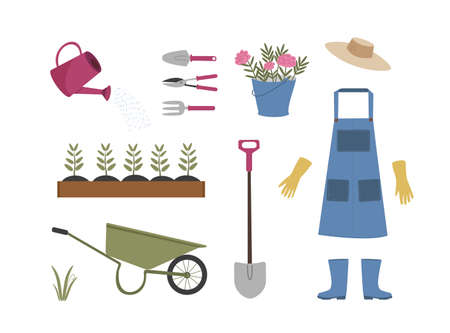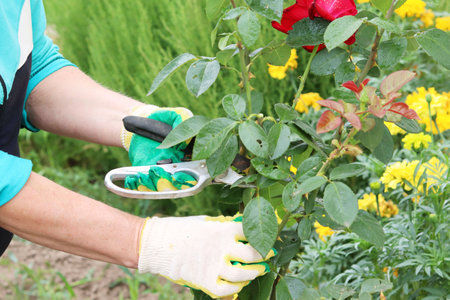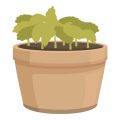1. Homemade Raised Bed Planter Frames
If youre looking to get the most out of your backyard garden, building your own raised bed planter frames is a great place to start. These DIY garden beds are not only cost-effective, but they also help with better drainage and make it easier to manage your soil quality.
Why Build Your Own Raised Beds?
Store-bought raised beds can be pricey, and they often don’t fit the exact size or style you need. By making your own, you can customize them to suit your space and plant types. Plus, using reclaimed wood or untreated cedar makes it both eco-friendly and long-lasting.
Materials Youll Need
| Material | Details |
|---|---|
| Reclaimed Wood or Cedar Boards | 4 pieces for sides (recommended 2″x6″ or 2″x8″) |
| Wood Screws | Galvanized to prevent rusting |
| Drill or Screwdriver | For assembling the frame |
| Measuring Tape | To ensure accurate cuts |
| Saw | If you’re cutting boards to size yourself |
Step-by-Step Instructions
- Measure and Cut: Decide on the dimensions of your planter (a common size is 4 ft x 8 ft) and cut your boards accordingly.
- Pre-drill Holes: To avoid splitting the wood, drill pilot holes at each corner where youll connect the boards.
- Screw the Frame Together: Use galvanized screws to attach the boards into a rectangular box shape.
- Select a Location: Place the finished frame in a sunny spot in your yard with good drainage.
- Add Landscape Fabric (Optional): Lining the bottom can help reduce weeds while still allowing water flow.
Tips for Success
- Cedar is naturally rot-resistant, making it ideal for outdoor use.
- Avoid pressure-treated wood, as it may contain chemicals harmful to plants.
- If you’re using reclaimed wood, inspect for nails or damage before building.
Recommended Dimensions Based on Garden Size:
| Garden Size | Recommended Bed Size |
|---|---|
| Small Yard or Patio | 2 ft x 4 ft |
| Average Backyard | 4 ft x 8 ft |
| Large Garden Area | Multiple beds of 4 ft x 12 ft or more |
This simple project is a perfect weekend DIY that pays off all season long. With just a few tools and some basic materials, you can create a sturdy, attractive home for your vegetables, herbs, or flowers—all tailored to your own backyard space.
2. DIY Compost Bin System
Building your own compost bin is one of the smartest and most sustainable projects any home gardener can take on. Not only does it help reduce kitchen scraps and yard waste, but it also gives you nutrient-rich compost that your garden will love. Best of all, you can make an effective system with materials you might already have around the house, like wooden pallets or plastic barrels.
Why Build a DIY Compost Bin?
Composting turns organic waste into “black gold” — a natural fertilizer that improves soil structure, retains moisture, and boosts plant health. Creating your own compost system saves money and cuts down on landfill contributions.
Popular DIY Compost Bin Options
| Type | Materials Needed | Benefits |
|---|---|---|
| Pallet Bin | 4 wooden pallets, screws or nails, optional hinges for door | Affordable, easy to assemble, good air flow |
| Barrel Tumbler | Plastic barrel with lid, metal rod or stand, drill for ventilation holes | Compact, easy to rotate, speeds up composting process |
| Trash Can Composter | Heavy-duty trash can with lid, drill for holes | Budget-friendly, portable, suitable for small spaces |
Tips for Building Your Compost Bin
- Location: Choose a shady spot with good drainage thats easily accessible year-round.
- Aeration: Make sure your bin has plenty of airflow to speed up decomposition.
- Size: A bin around 3×3 feet is ideal — big enough to generate heat but small enough to manage easily.
- Lid or Cover: Keeps moisture in and pests out.
What to Compost (and What Not To)
| Compost These | Avoid These |
|---|---|
| Fruit & veggie scraps Coffee grounds Eggshells Grass clippings Dry leaves |
Dairy products Meat or bones Greasy foods Pet waste Diseased plants |
Get Started Today!
You don’t need fancy tools or expensive equipment to start composting at home. With just a few basic materials and a little weekend effort, you can build a DIY compost bin that helps your garden thrive while reducing waste from your kitchen and yard. Its a win-win for you and the planet!

3. Custom Drip Irrigation System
If youre looking to save water and keep your garden healthy with minimal effort, building your own custom drip irrigation system is a great DIY project. Instead of watering by hand or using sprinklers that waste water, a drip system delivers moisture right where your plants need it—at the roots.
Why Build Your Own Drip System?
- Cost-effective: You can use inexpensive PVC pipes or even old garden hoses.
- Water-saving: Reduces evaporation and runoff compared to traditional watering methods.
- Customizable: Tailor it to fit your exact garden layout and plant needs.
Materials Youll Need
| Item | Description |
|---|---|
| PVC pipes or repurposed hoses | Main lines for distributing water |
| Drill with small bits | To make holes for water outlets |
| PVC connectors or hose fittings | For shaping and connecting your layout |
| End caps | To close off the ends of each line |
| Water filter (optional) | Keeps debris from clogging emitters |
How to Build It
- Plan your layout: Sketch out your garden beds and where you want the water to go.
- Cut your pipes or hoses: Measure and cut pieces according to your plan.
- Drill holes: Space small holes near each plants base for slow water release.
- Connect everything: Use connectors to join pieces and shape the system around your garden.
- Add end caps: Seal off the ends so water flows through the entire system evenly.
- Hook up to a water source: Attach it to a faucet or rain barrel, and test it out!
Troubleshooting Tips
- If some areas are too dry, check for clogged holes or add more outlets.
- If leaks occur at joints, tighten fittings or use waterproof tape.
A DIY drip irrigation system not only saves time but also helps your plants thrive with consistent moisture right where they need it most. Plus, its a fun weekend project that pays off all season long!
4. Simple Cold Frame for Season Extension
A cold frame is one of the most effective DIY tools you can build to help extend your gardening season. Especially in areas with chilly springs and early frosts, a cold frame acts like a mini greenhouse that traps heat and protects your plants from harsh weather.
What Is a Cold Frame?
A cold frame is essentially a bottomless box with a transparent lid that allows sunlight in while keeping warmth and moisture trapped inside. It creates a microclimate that’s warmer than the outside air, giving your seedlings or cool-season crops a head start or extra growing time in fall.
Why Build Your Own?
Building your own cold frame is not only budget-friendly but also a great way to repurpose materials like old windows and leftover lumber. You can customize the size to fit your garden space perfectly.
Materials You’ll Need:
| Item | Description |
|---|---|
| Old window or clear acrylic panel | Used as the lid to let sunlight in |
| Wooden boards (2×6 or 2×8) | For building the frame walls |
| Screws or nails | To assemble the wooden frame |
| Hinges (optional) | If you want to make the lid openable for ventilation |
| Drill or hammer | For assembly |
Steps to Build:
- Measure and cut your lumber to create a rectangular box that matches the size of your window top.
- Screw or nail the boards together to form the base of your cold frame.
- Attach the old window on top using hinges if desired, so it can open on warm days for airflow.
- Place the cold frame over your garden bed or pots where you want added protection.
- Tilt the box slightly southward for maximum sun exposure during winter months.
Best Uses for Your Cold Frame:
- Starting seeds earlier in spring
- Hardening off indoor-grown seedlings before transplanting outdoors
- Protecting tender greens like lettuce, spinach, and kale through fall and early winter
- Overwintering certain herbs and perennials
A simple cold frame is an easy weekend project that can make a big difference in how long and how well your garden grows throughout the year.
5. DIY Vertical Garden Planter
If youre tight on space but still dream of a lush garden, a DIY vertical garden planter is your go-to solution. Whether you live in an apartment or have a small backyard, going vertical helps maximize your growing area without taking up too much ground space.
Why Build a Vertical Planter?
Vertical planters are perfect for growing herbs, leafy greens, strawberries, and even flowers. They make gardening accessible for people with limited mobility and add a decorative touch to walls, balconies, or patios. Plus, they’re budget-friendly and easy to build with materials you may already have at home.
Materials You Can Use
| Material | Pros | Best For |
|---|---|---|
| Wooden Pallets | Affordable, rustic look | Outdoor gardens, patios |
| Hanging Containers | Flexible placement, space-saving | Balconies, fences |
| PVC Pipes | Durable, modern design | Indoor and outdoor use |
| Shoe Organizers (fabric) | Lightweight, easy to hang | Apartment balconies |
Simple Steps to Build One Using Wooden Pallets:
- Find a clean wooden pallet—make sure it’s heat-treated and safe for planting.
- Sand down any rough edges to prevent splinters.
- Add landscape fabric or plastic sheeting to the back and bottom sections using a staple gun. This will hold the soil in place.
- Fill each level with potting soil and plant your favorite herbs or flowers.
- Lean the pallet against a sunny wall or secure it upright using brackets or support beams.
Pro Tip:
If youre using hanging containers, try mixing different sizes and shapes for a fun and functional garden wall. Use hooks or sturdy wire to hang them securely from fences, railings, or indoor mounts.
Great Plants for Vertical Planters
- Basil, thyme, mint (herbs)
- Lettuce, spinach (leafy greens)
- Pansies, marigolds (flowers)
A vertical garden planter not only saves space but also adds beauty and freshness to your living area. It’s one of the most practical DIY tools every home gardener should consider building.


